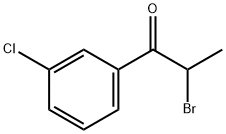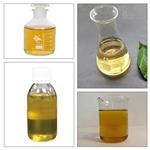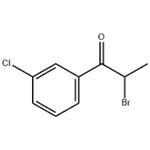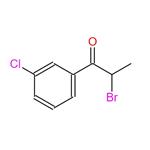2-Bromo-3'-chloropropiophenone is irritating to the eyes, respiratory system, and skin.
2-Bromo-3'-chloropropiophenone is used as an important intermediate for raw material and intermediate used in organic synthesis agrochemical, pharmaceutical and dyestuff field.
2-Bromo-3'-chloropropiophenone (BCP), a yellow oil, is an intermediate used in the synthesis of bupropion and is also found as an impurity of bupropion hydrochloride. Bupropion is a second-generation antidepressant that was originally approved by the United States Food and Drug Administration (FDA) in 1985. It is a norepinephrine and dopamine transporter inhibitor and an antagonist at neuronal nicotinic acetylcholine receptors. Bupropion is also approved for smoking cessation[1].
The current United States Pharmacopeia (USP) specification is for no more than 0.1% BCP in the bupropion hydrochloride monograph. The Material Safety Data Sheet from a manufacturer indicates that BCP is irritating to the eyes, respiratory system, and skin. 2-Bromo-3'-chloropropiophenone was mutagenic with S9 metabolic activation, increasing the mutant frequencies in a concentration-dependent manner, up to 22- and 145-fold induction over the controls in Salmonella strains TA100 and TA1535, respectively. BCP was also positive in the in vitro micronucleus assay, resulting in up to 3.3- and 5.1-fold increase of micronucleus frequency for treatments in the absence and presence of S9, respectively; and 9.9- and 7.4-fold increase of aneuploidies without and with S9, respectively. The addition of N-acetyl-l-cysteine, an antioxidant, reduced the genotoxicity of BCP in both assays. Further studies showed that BCP treatment resulted in induction of reactive oxygen species (ROS) in the TK6 cells. The results suggest that BCP is mutagenic, clastogenic, and aneugenic, and that these activities are mediated via generation of reactive metabolites[1].
[1] Meng, Fanxue , et al. "Genotoxicity of 2-bromo-3′-chloropropiophenone." Toxicology & Applied Pharmacology 270.2(2013):158-163.



